Australia’s Professor Arnold Dix hailed a hero after rescue of 41 tunnel workers
A Melbourne tunnel expert is being hailed a hero after leading the rescue of 41 Indian workers trapped in a collapsed tunnel for two weeks.
Rescuers safely brought out all 41 Indian workers from a collapsed Himalayan road tunnel where they were trapped after a marathon 17-day engineering operation led by Melbourne tunnel expert Arnold Dix.
With beaming smiles, the rescued men were welcomed as heroes after being hauled through 57 metres (187 feet) of steel pipe on stretchers specially fitted with wheels, where they were greeted by state officials before embracing their families.
“Hail mother India!” crowds outside the tunnel cheered, as news spread that all had made it safely out of the under-construction tunnel in the Himalayan state of Uttarakhand, where they had been incarcerated since a partial collapse on November 12.
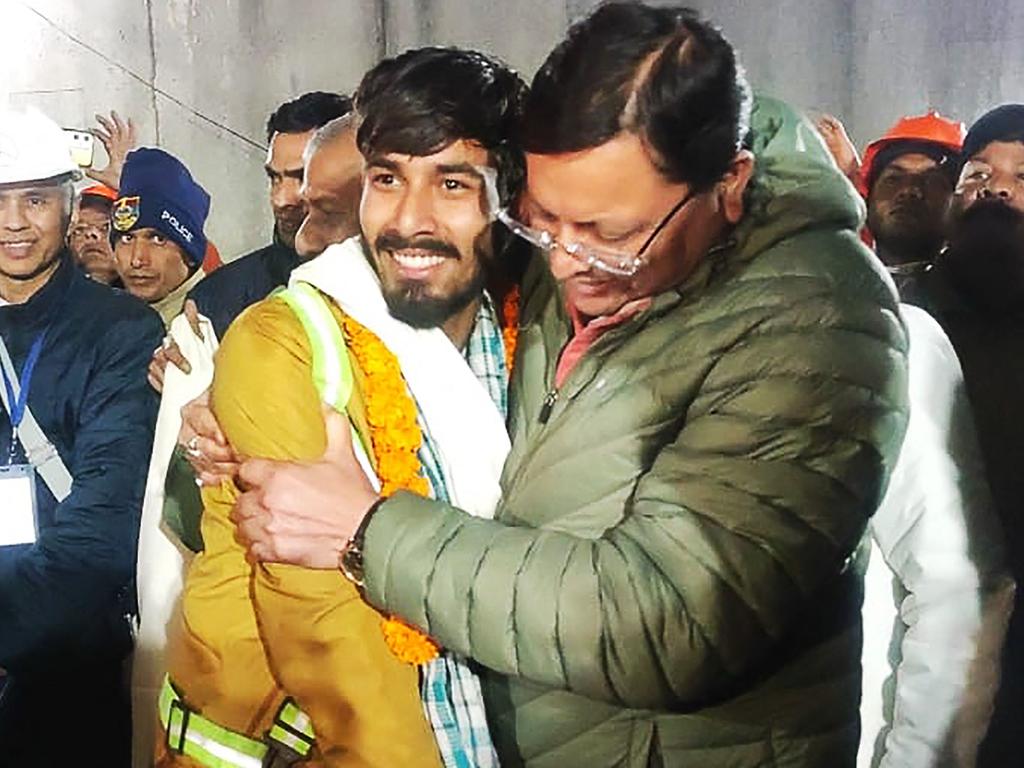
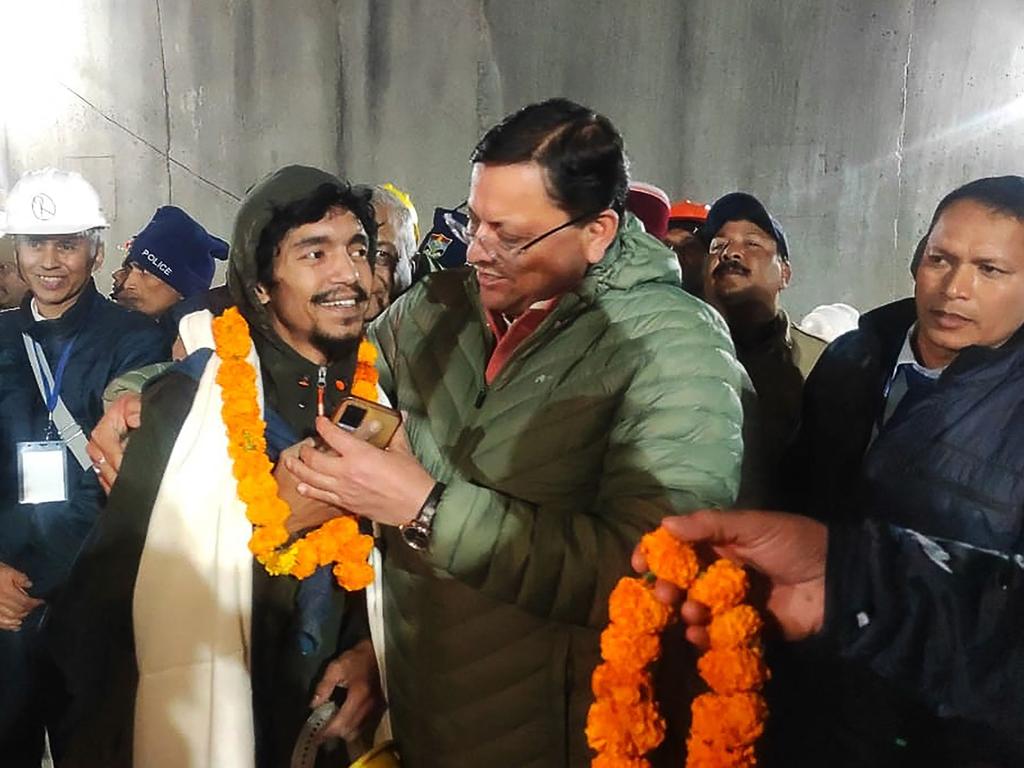
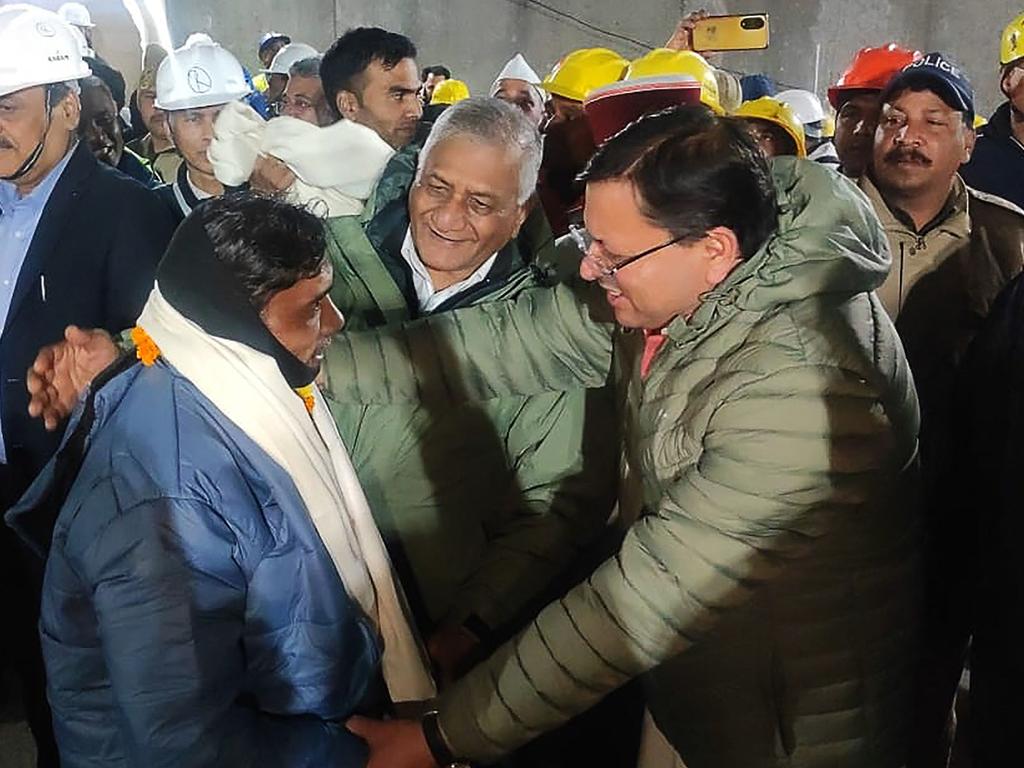
Professor Dix, president of the International Tunnelling and Underground Space Association, who is being hailed a hero in India for helping get the men out said it was a delicate operation.
“It was nerve-racking – like, while this is happening, the roof – the mountain is ready to collapse. If we even had a little earth tremor it would come down,” he told Sunrise.
“It’s just – I’m just so excited, what do they call it in the commercial world? I set a stretch target for myself, which was 41 men home and, you know, no-one hurt, and we got there. We did it.”
Internation tunneling expert Arnold Dix is totally humbled with the spiritual side of the universe in the #UttarakhandTunnelRescue.pic.twitter.com/qWfLaura34
— Shining Star 🇮🇳 (@ShineHamesha) November 28, 2023
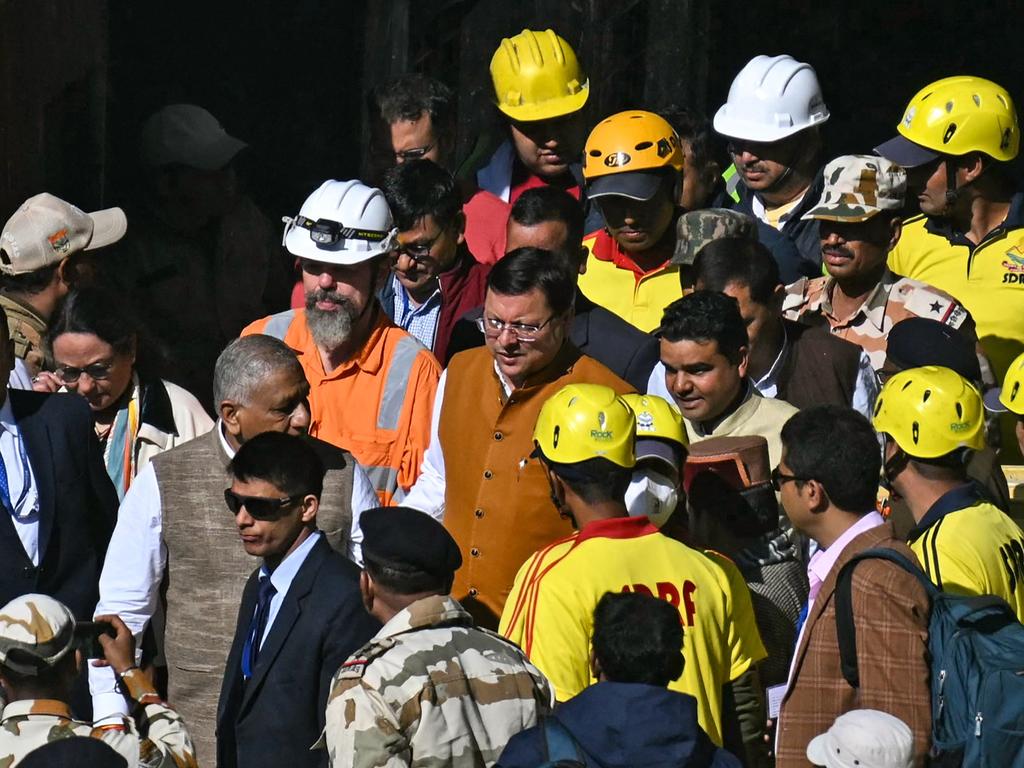
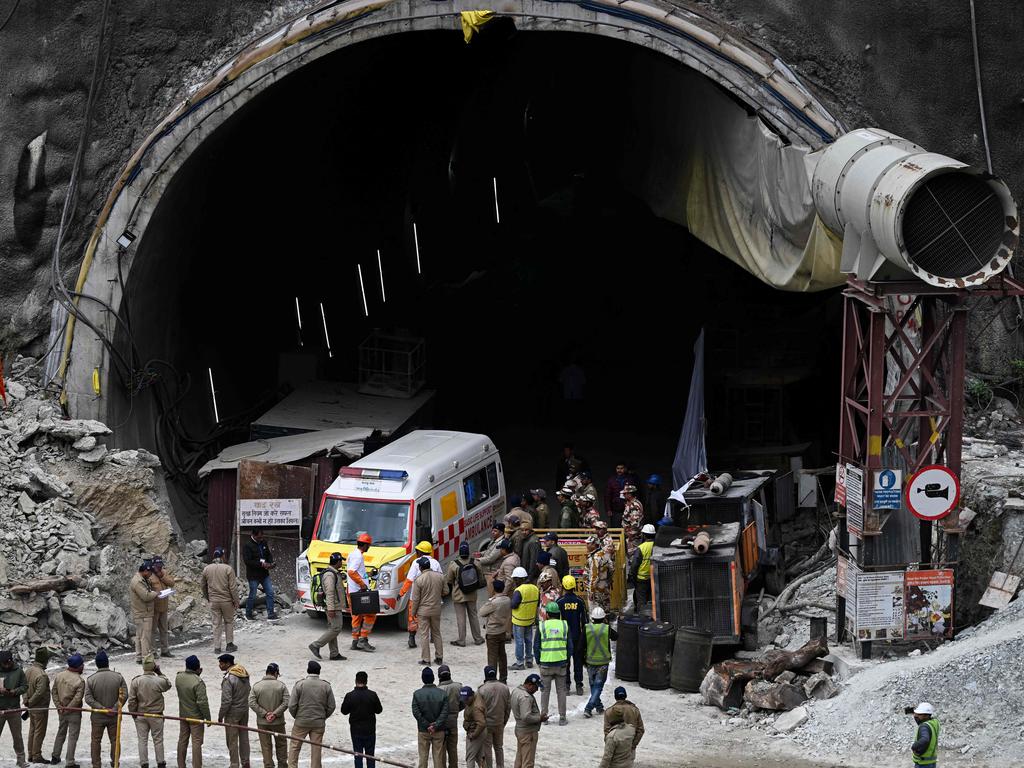

Last week, engineers working to drive a metal pipe horizontally through the earth ran into metal girders and construction vehicles buried in the rubble, snapping a giant earth-boring machine.
A separate vertical shaft was also started from the forested hill above the tunnel, as well as from the far side of the road tunnel, a much longer route estimated to be around 480 metres.
While long awaited breakthrough in #Uttarkashi tunnel operation is achieved, visual of Prof. Arnold Dix, international tunnelling expert, bowing and praying before temple near the site is so heartwarming.
— Arun Bothra 🇮🇳 (@arunbothra) November 28, 2023
Prayers for safety of all the trapped workers.
pic.twitter.com/CcrkeEZZ9i
Despite the setbacks, Professor Dix said he remained confident they would get the men out safely.
“I just had this feeling that we were going to do it and I genuinely knew we were going to do it and there was something infectious in me having that view and it kind of affected everybody,” he said.
“So our meetings would be so, ‘OK, but it’s just turned to shit, so OK what are we going to do now?’ So you would have this group of people saying, ‘Right, well, are they always OK? They’re still OK. So let’s have a think.’.”
The professor said memes are circulating portraying him as “Father Christmas in the tunnel”.
- Wasnt his country
— Roshan Rai (@RoshanKrRaii) November 28, 2023
- Weren't his people
- Wasnt his job
But Australian Arnold Dix, President of the Internation tunneling association rushed to India, worked 24/7 to spearhead the rescue operation in challenging conditions at this age.
He treated those stuck workers like they… pic.twitter.com/pORO5opgD0
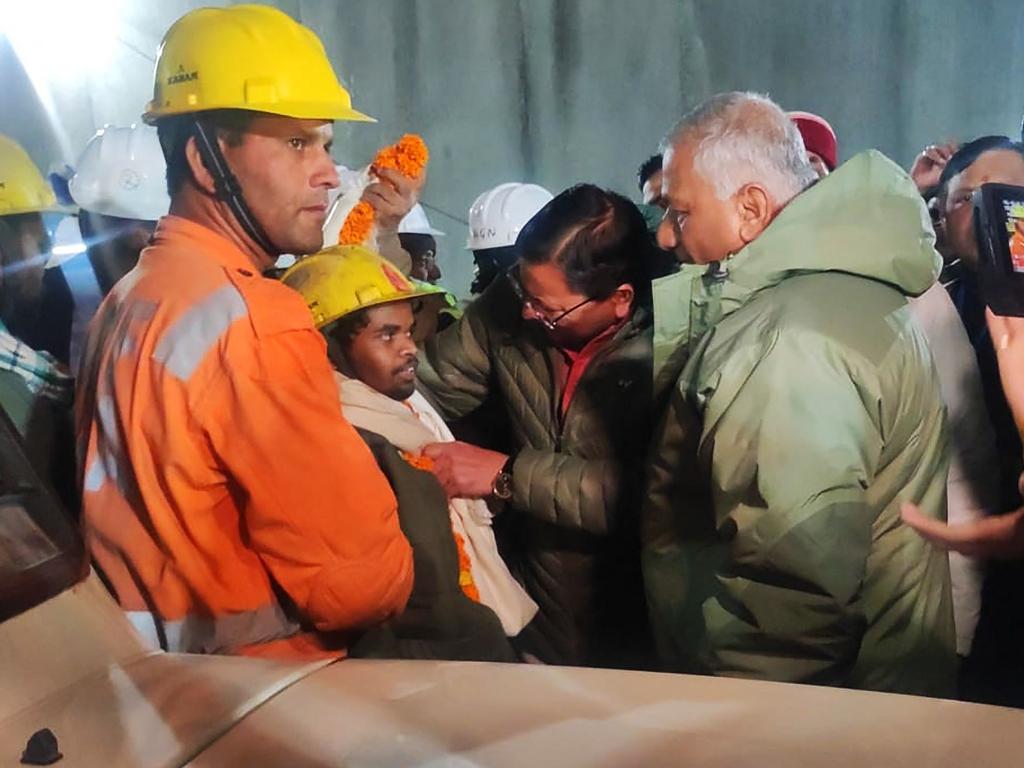
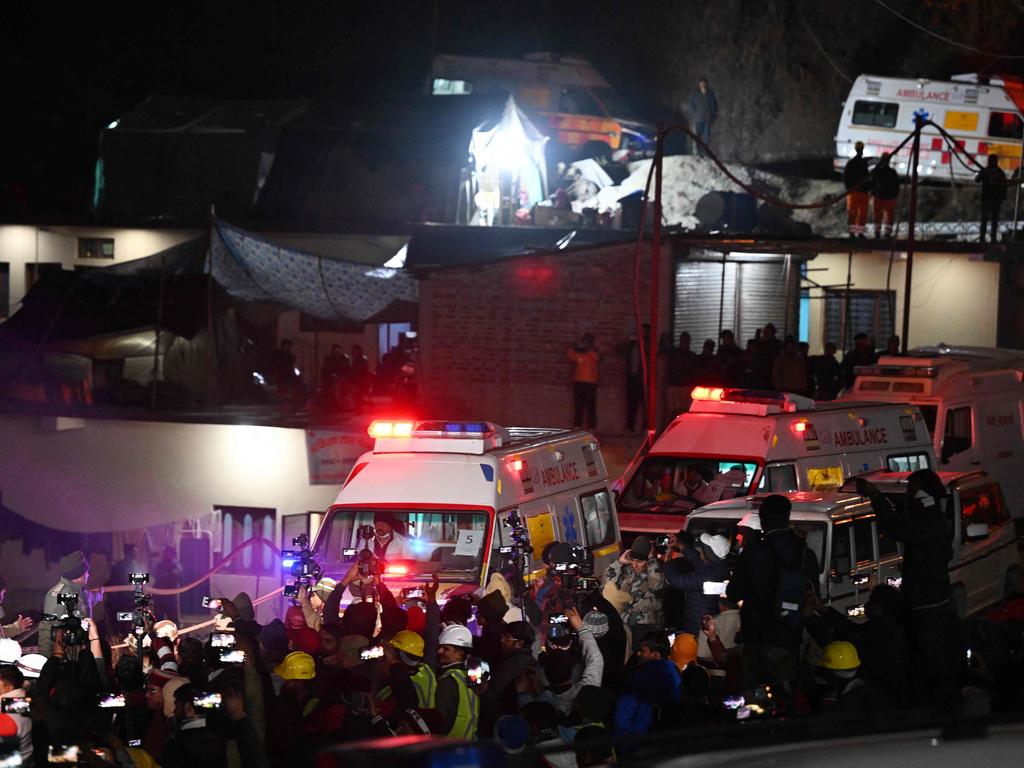

The workers were seen alive for the first time on Tuesday, peering into the lens of an endoscopic camera sent by rescuers down a thin pipe through which air, food, water and electricity are being delivered.
Though trapped, they have plenty of space in the tunnel, with the area inside 8.5 metres high and stretching about two kilometres in length.
Relatives outside celebrated, after previous hopes of reaching the men were repeatedly dashed by falling debris and the breakdown of multiple drilling machines, in a rescue operation the government said took place in “challenging Himalayan terrain”.
“We are thankful to God and the rescuers who worked hard to save them,” Naiyer Ahmad told AFP, whose younger brother Sabah Ahmad was among the trapped workers, and who had been camping out in bitterly cold temperatures at the site for over two weeks.
“We are extremely happy, no words can explain it,” said Musarrat Jahan, the wife of one rescued worker Sabah Ahmad told AFP by phone from Bihar state, where she had been waiting desperately for news.
“Not only my husband got a new life, we also got a new life. We will never forget it”.
Prime Minister Narendra Modi told the workers in a statement that their “courage and patience is inspiring everyone”.
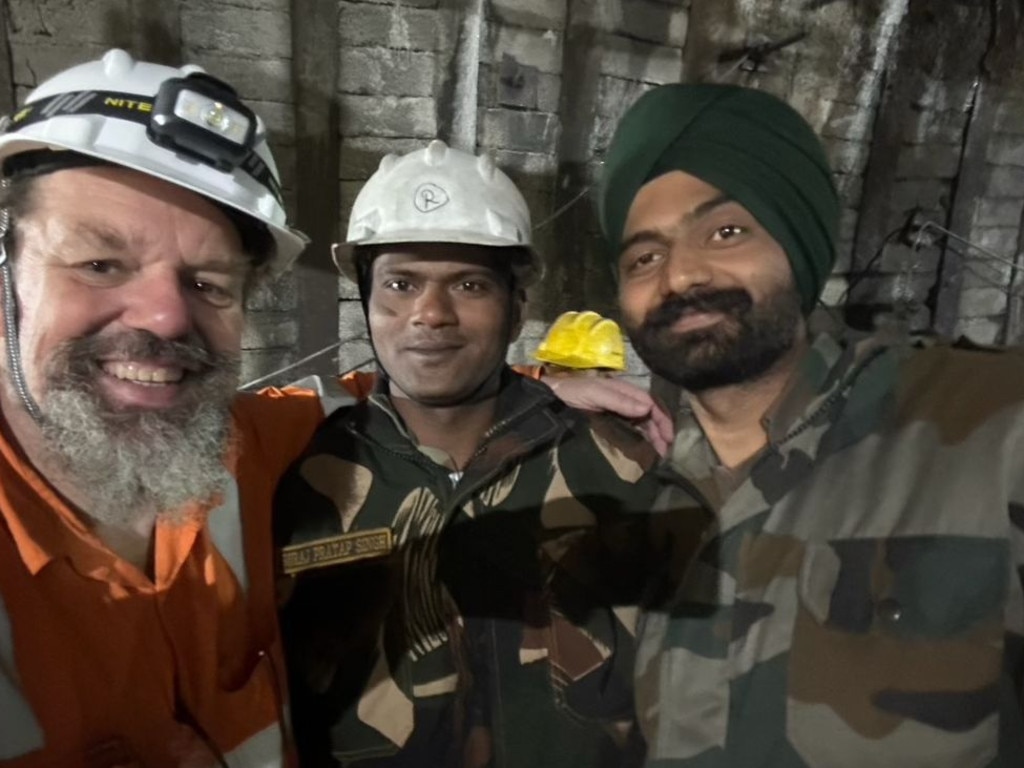
‘MIND-BOGGLINGLY BAD’ SITUATION
The men had been trapped since November 12, when the underground tunnel they were working on in Uttarakhand, not far from India’s border with Tibet, collapsed after a landslide.
Remarkably, all survived, but the mountain “cracked on the inside” and the men and their rescuers still faced the danger of other land movements, Professor Dix said last week.
“We’ve got a mountain that’s just had an avalanche. A hole is forming in the mountain … a 40 or 50 metre hole, vertically inside a mountain, with rocks dropping off it,” he said.
“We don’t know what comes next … we could actually experience another catastrophic avalanche any moment.”
Prof Dix was called for advice “pretty much straight away” after the incident happened, and was flown from a civil engineering job in Slovenia to oversee the delicate rescue mission in the Himalayas.
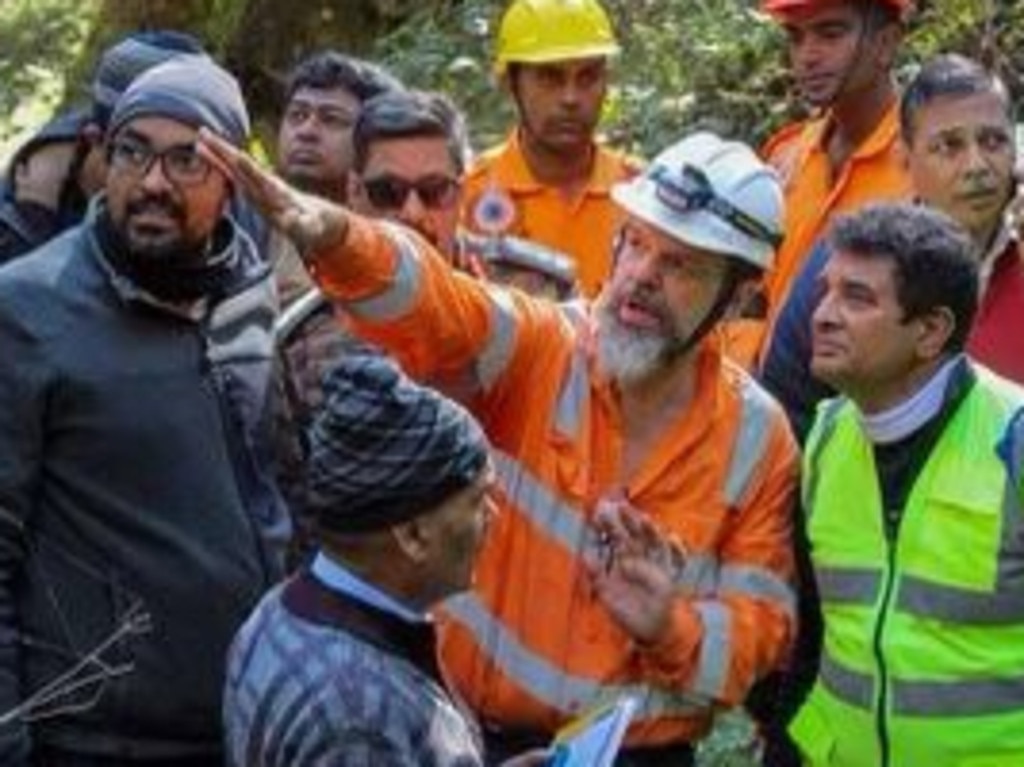
“What I saw was mind-bogglingly bad from a geological perspective,” he said.
“A tunnel that had collapsed previously, and the engineers had done their best to get it under control, and then it’s had this catastrophic collapse. In my career I have no precedent for the scale of what’s happened.”
Hopes were high that the rescue might have been completed last Wednesday, but the team’s drilling equipment malfunctioned after striking an object.
“There was such optimism a couple of days ago, but right now we are barely the length of car, maybe the length of a medium sized bus from getting these men back, but we’ve hit something and we don’t know what it is and our machine has blown up,” Prof Dix said.
The rescue team was able to get a small pipe through to the trapped men early on, through which they pumped fresh air and small food items such as beans and peanuts.
“It’s like at school, when you’d pull the middle out of a pen and you’d stick a bit of rice in and you’d blow it and use it to shoot at people; it’s a bit like that,” Prof Dix said.
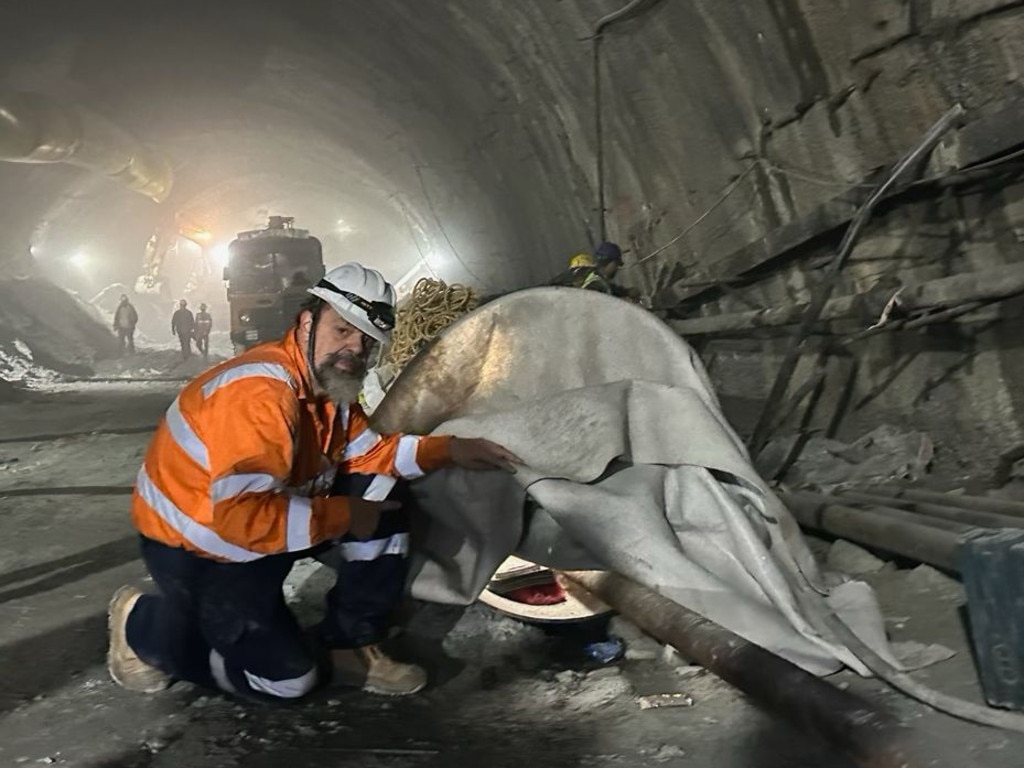
A second, larger pipe got through to the men earlier in the week, through which they were able to receive bottled water, a walkie talkie, a camera and a power line.
Prof Dix said the workers had been very worried about their predicament, and some antidepressants had been shipped down the pipe along with the other supplies.
“They’re miners and tunnel builders. They’re not stupid; they know that there’s a huge risk something more, terrible, could happen,” he said.
Asked about the chances of a successful rescue, Prof Dix said he “believed we’re bringing them home”.
“When I talk to the local people and the families [of the trapped workers] the only thing I say is that I’m confident that they were dancing with Diwali when they went in, and I’m confident that they’ll be singing Christmas carols at Christmas,” he said.




